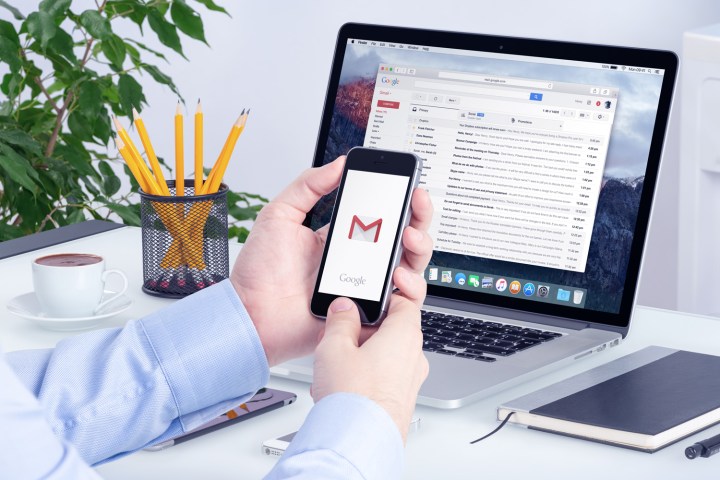
It’s as straightforward as it sounds. When you’re composing a message in the Gmail app, tap the attachment icon (i.e., the paperclip in the upper-right-hand corner) and choose the Send money option. Once you’ve entered the amount you wish to gift, selected a funding source, and tap out a memo, and Google’s magical money-changing elves — er, servers — will facilitate the transfer.
It’s a fee-free ordeal, and rolling out to U.S.-based Gmail users on iOS and Android starting today.

Sending money via Gmail is sort of old hat, it turns out. At the search giant’s 2013 I/O Developer Conference, Google announced “money as attachments” for Gmail on the web, a feature that lets users age 18 and over transfer up to $10,000 from a linked bank account or credit card to any email recipient. As long as the receiver had Wallet, Google’s payment processing platform, they could withdraw the funds however they saw fit.
The feature’s mobile expansion is aimed at the millions of people who use their smartphones to send money. It’s a skyrocketing market — in January 2016, Venmo handled $1 billion in peer-to-peer transactions, or two and a half times the volume from January 2015 and ten times the volume from January 2014.
Gmail is far from the only way to send money, of course. Facebook lets you tap a debit or credit card to pay friends through Messenger. Square Cash boasts quicker-than-average deposit times for texted funds. And Snapchat’s built-in payments feature lets you send funds to anyone 18 and older.

Google’s own Wallet app is still an option, as well. The app launched initially as a catchall payments platform — until mid-2016, Google offered a physical Wallet card that let users to pay for goods and withdraw money from ATMs. But many of Wallet’s core functions have since been superseded by Android Pay, Google’s contactless payment framework.
Wallet’s not dead yet, though. In August 2016, it gained the ability to transfer funds automatically to an attached bank account. And in November, Google debuted a refreshed Wallet webpage and app with a bigger emphasis on peer-to-peer payments.

